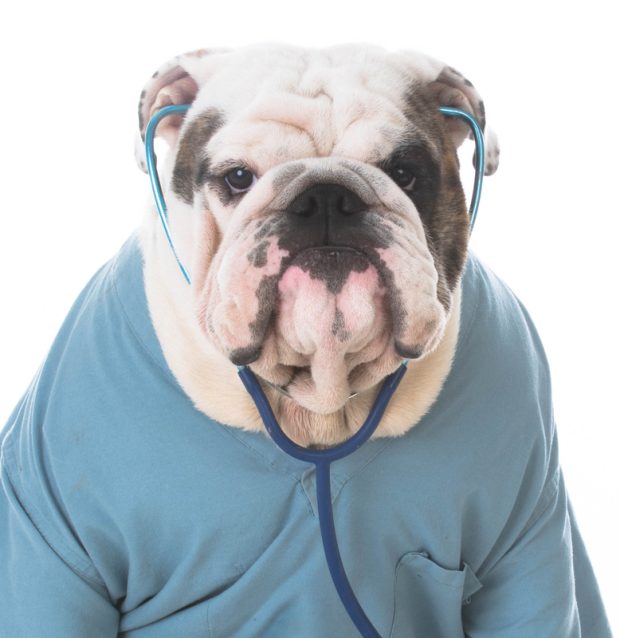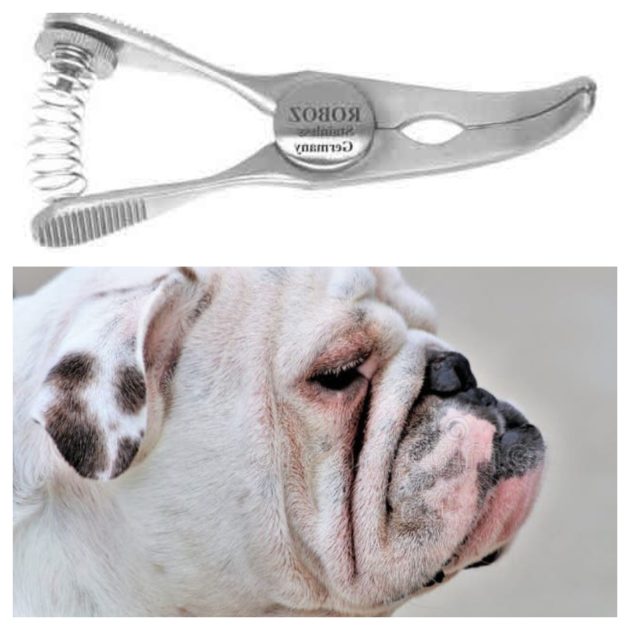
In this post, we’re talking clamps, and one clamp, in particular.
The clamp on which we’re focused is adjustable and has two hinged arms with serrated jaws at the ends that can be locked into place. It comes in a variety of angles, its force determined with a large closing force range. The aforementioned serrations are important because they provide a firm grip, and if you’ve ever had vascular or cardiothoracic surgery, it’s a good bet that your surgeon used such a clamp to secure, hold, or occlude tissues, blood vessels, or other delicate structures during your operation.
If you’d been awake during your procedure, you would have heard the surgeon request: “Bulldogs, please.”
Inasmuch as Bulldog owners may think their breed is smart enough to assist with open heart surgery, the breed reference is actually to the clamp we just described. The term, “Bulldog clamp,” has become a standard name for this type of surgical instrument because when the clamp is closed, the jaws resemble the powerful and gripping jaws of a Bulldog.

In the interest of accuracy, these clamps are also called Bulldog forceps, Satinsky clamp, or serrefine, and there are different types that include the Glover Bulldog Clamp, Schwartz Micro Bulldogs, Santulli Angular Model Bulldog Clamp, Wylie Lumbar Bulldog Clamp, Deitrich Bulldog Clamp, Jacobson Bulldog Clamp, and probably a dozen more defined by their closing force range, size and shape, and the curvature of the arms.
Less clear is who invented the Bulldog clamp. In fact, it’s dizzying how many different names come up when searching for its inventor: Depending upon the source, the options are:
- Scottish surgeon, Robert Liston, invented a type of locking artery forceps in the 19th century, and as far as we can tell, it was a predecessor of today’s Bulldog clamp; As an aside, Liston also invented a leg splint used to stabilise dislocations and fractures of the femur. It’s still used today;
- Pediatric surgeon, Willis J. Potts, MD, who in 1948, is credited for invented a non crushing vascular clamp with fine serrations that held vessel walls in place. His instrument was long enough so that its handles were outside the immediate operative field, and some were angled so that they lay flat while the jaws bent inward into the wound;
- An American surgeon, Dr. William T. Blodgett, is credited by some for having developed the Bulldog clamp in the 1960s as a surgical instrument used to control blood flow in blood vessels during surgery;
- Dr. E. J. “Jack” Foley, a renowned American surgeon;
- Dr. John E. Satinsky, a cardiovascular surgeon, is credited by some for the design of the clamp, while others point to Dr. Dennis Scanlan, Sr. who, in conjunction with Dr. Sam Hunter, developed the first aorta clamp designed to facilitate multiple graft attachments without the necessity to reposition.
Perhaps the most realistic statement we read on the topic is that once invented, medical instruments often undergo iterative development and refinement by various surgeons and engineers over time. Interestingly, “Bulldog clamps” got our attention when we read an article about Vivien Thomas, a man who never went to medical school, but had genius intelligence, and a stunning dexterity. As the article wrote, “he might have been a great surgeon. Instead, he became a legend.” It’s a fascinating read, but we should warn you that there are references to laboratory dogs that were used in the course of Vivien Thomas’ work.
The Remarkable Story of Vivien Thomas, the Black Man Who Helped Invent Heart Surgery
Top image:© Willeecole | Dreamstime.com
